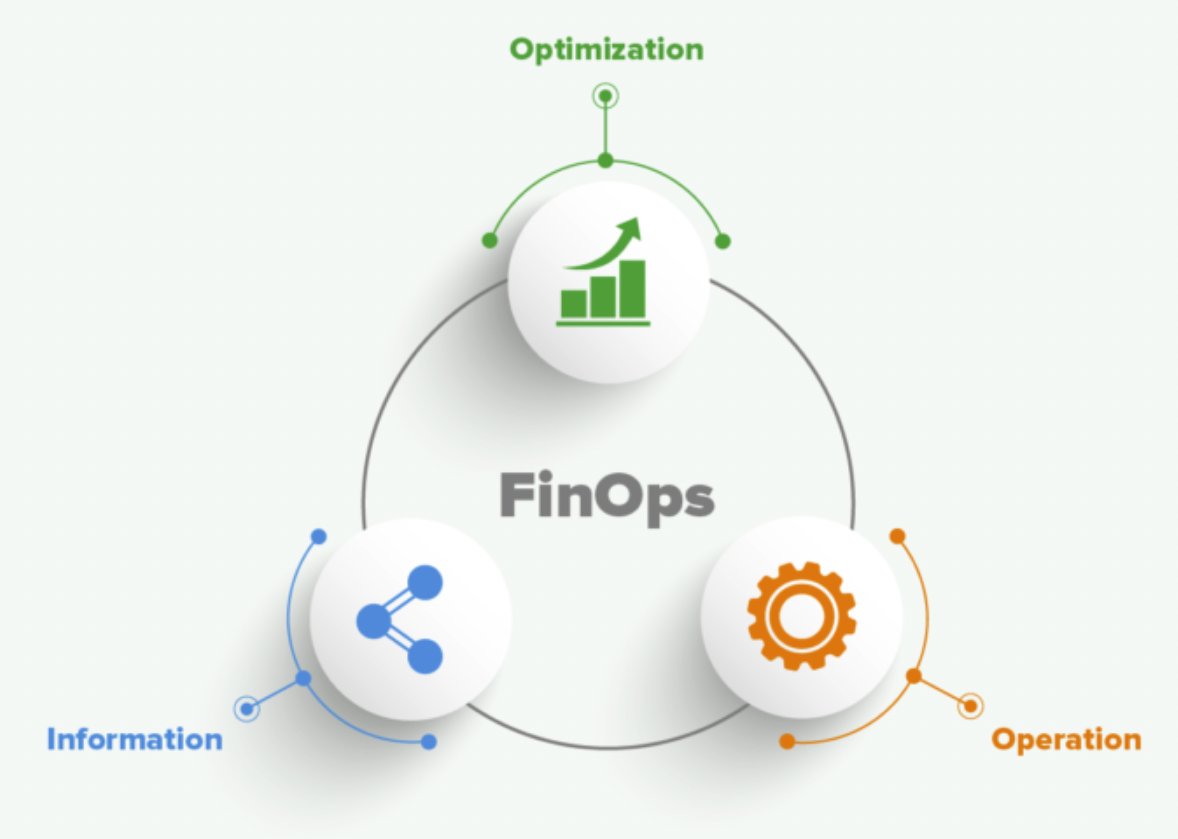
FinOps is a cloud financial management framework.
In other words, FinOps is a practice that allows businesses to better manage and optimize their cloud spending.
68% of organizations say that silos between teams within an organization lead to higher cloud spending.
And FinOps is an emerging practice to mitigate this problem. That’s because a FinOps initiative allows cross-functional teams to monitor, schedule, and optimize their cloud usage–essentially removing silos between these teams regarding cloud usage.
This, in turn, helps lower cloud costs because it holds teams accountable for their specific usage and costs.
FinOps implementation is still in its infancy (only around 15% of organizations have an established FinOps initiative).
However, 44% of organizations are looking to implement FinOps in the near future.
FinOps and its role in the emerging tech space
FinOps is part of the Cloud Cost Management trend.
Searches for “cloud cost management” have increased by 57% over the last 24 months.
That’s because cloud computing is getting expensive. Approximately 82% of organizations say that implementing cloud systems turned out to be more expensive than initially thought.
And Flexera estimates that 30% of enterprise cloud spending is wasted. Which has created growing demand for cloud cost management and optimization tools and practices.
Overview of Cloud FinOps in 5 Minutes
FinOps – FAQs
What is FinOps?
FinOps is a practice that allows businesses to better manage and optimize their cloud spending.
In other words, it’s a way to make sure you’re getting the most bang for your buck when it comes to using cloud services.
How does it work?
Basically, FinOps involves creating cross-functional teams that monitor and schedule cloud usage (among other things).
This helps to remove silos between departments and makes everyone accountable for their specific usage and costs.
Why is it important?
With cloud services becoming more and more common (and expensive), FinOps can help make sure you’re not wasting any money on unnecessary or unused services.
How do I get started with FinOps?
If you’re interested in implementing FinOps in your organization, the first step is to gather a team of stakeholders from different departments.
This team will be responsible for monitoring and managing cloud usage (among other things).
Once you have your team in place, you can start working on creating a plan that outlines how FinOps will be implemented in your organization.
What are the benefits of FinOps?
There are several benefits of FinOps, including:
- improved management of cloud spending
- better control over cloud usage
- reduced silos between departments
- increased accountability for cloud usage and costs.
What are the challenges of FinOps?
One of the challenges of FinOps is that it’s still a relatively new practice. This means that there aren’t a lot of resources or best practices available yet.
Another challenge is that it can be difficult to get buy-in from all stakeholders, especially if they’re not familiar with FinOps.
Finally, setting up and managing a FinOps team can be time-consuming and expensive.
Summary – FinOps
Organizations are looking for ways to better manage their cloud usage and costs – and that’s where FinOps comes in.
With the right tools and processes in place, your organization can implement a FinOps initiative to help lower cloud costs.


![Backwards 3: How to Type "Ɛ" [EASY]](https://softwareblade.com/wp-content/uploads/2022/02/Screen-Shot-2022-02-19-at-9.03.25-PM-150x150.png)